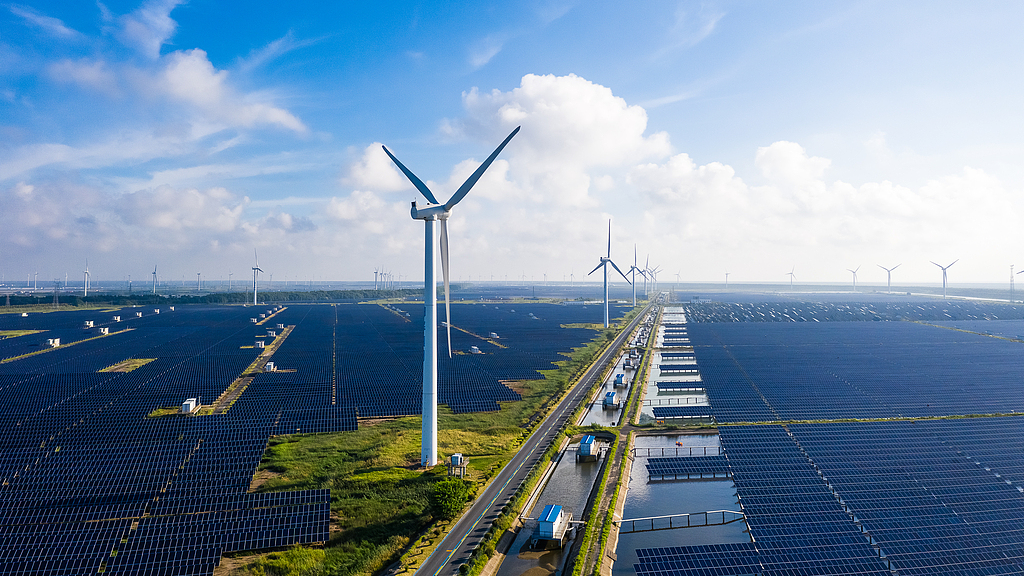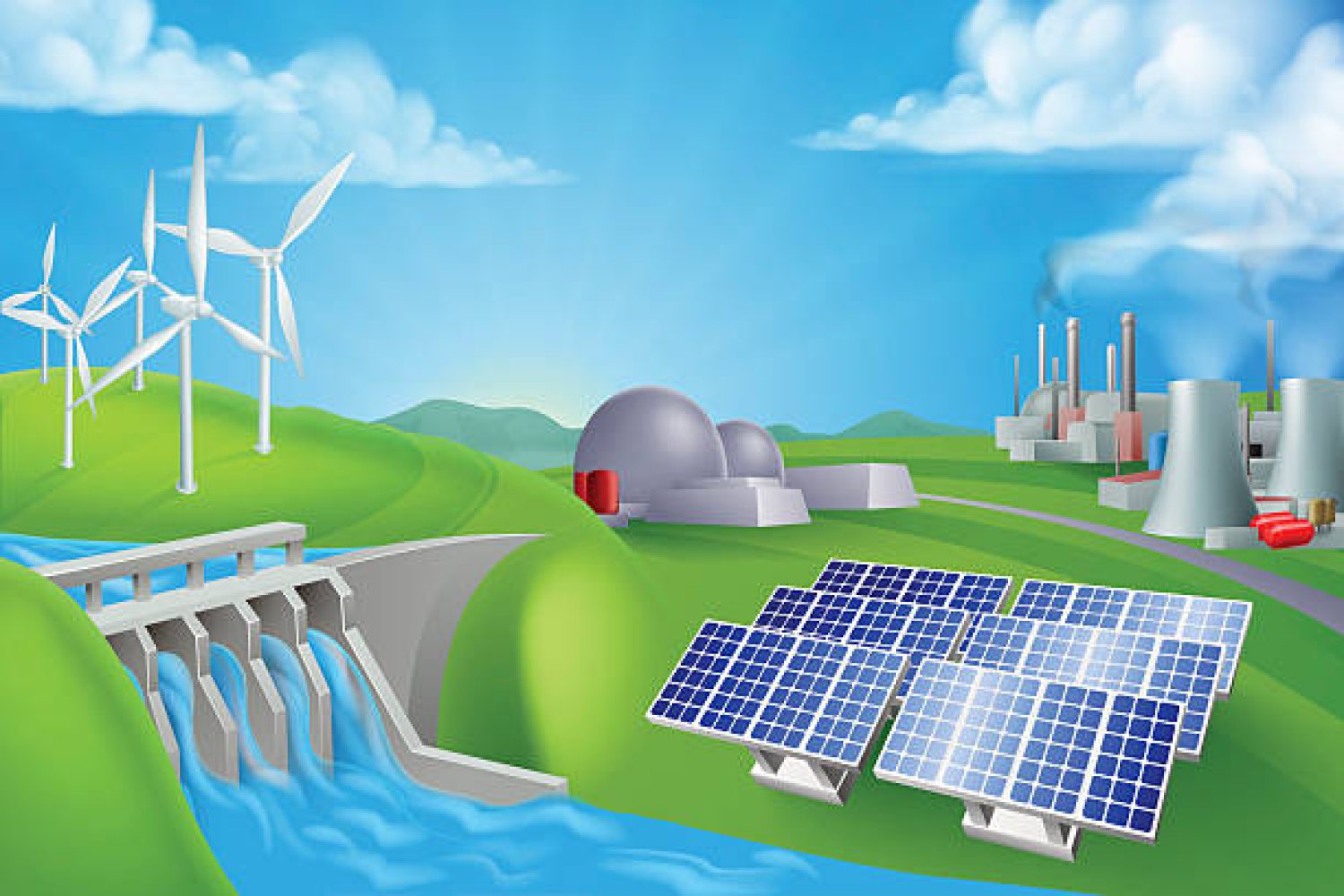China’s installed wind power generation capacity tops world for 15 consecutive years – CCTV.com English

China’s Leadership in Wind Energy and Contribution to Sustainable Development Goals
Recent data from the China Electricity Council confirms China’s position as the global leader in installed wind power generation capacity for 15 consecutive years. This sustained growth is a significant contribution to the United Nations Sustainable Development Goals, particularly SDG 7 (Affordable and Clean Energy) and SDG 13 (Climate Action). The nation’s progress is marked by a rapid and stable expansion of wind energy, with an average annual capacity increase exceeding 100 million kilowatts.
Current Capacity and Progress Towards SDG 7
China’s advancements in renewable energy infrastructure directly support the targets of SDG 7 by substantially increasing the share of renewable energy in the national energy mix. This progress is quantified by the latest official statistics.
Key Statistics
- Cumulative Grid-Connected Capacity: 580 million kilowatts.
- Share of National Installed Capacity: 15.7 percent.
- Newly Added Grid-Connected Capacity: Over 57.84 million kilowatts.
- Industrial Consumption Share: Wind power generation accounts for 10.1 percent of the total electricity consumption by large industrial enterprises.
Future Projections and Commitment to SDG 13
China has established a clear roadmap for its energy sector, with ambitious targets that align with the objectives of SDG 13 (Climate Action). These goals are designed to facilitate a transition to a low-carbon economy and achieve carbon neutrality within the energy sector.
National Energy Transition Targets
- 2026-2030: Achieve a minimum annual new installed wind capacity of 120 million kilowatts.
- By 2030: Reach a cumulative installed wind power capacity of 1.3 billion kilowatts.
- By 2035: Ensure non-fossil energy constitutes over 30 percent of total energy consumption.
- By 2035: Increase total installed wind and solar power capacity to over 3.6 billion kilowatts, more than six times the 2020 level.
- By 2060: Attain a cumulative installed wind power capacity of 5 billion kilowatts to support carbon neutrality in the energy sector.
Global Impact and Support for SDGs 9, 8, and 17
The influence of China’s wind power industry extends globally, contributing to multiple SDGs through international trade and investment. This expansion fosters sustainable industrialization, economic growth, and global partnerships.
International Expansion and Technology Dissemination
- Global Reach: Chinese manufacturers have exported wind turbine units to 57 countries across six continents.
- Overseas Investment: Seven manufacturers have either established or are advancing plans for overseas production facilities.
This global engagement supports several interconnected goals:
- SDG 9 (Industry, Innovation, and Infrastructure): The export of advanced wind turbine technology promotes sustainable industrialization and helps build resilient green infrastructure worldwide.
- SDG 8 (Decent Work and Economic Growth): The expansion of the wind energy sector creates jobs and stimulates economic growth both domestically and in partner countries.
- SDG 17 (Partnerships for the Goals): The dissemination of renewable energy technology and the establishment of overseas operations exemplify a commitment to global partnerships for sustainable development, aiding other nations in their transition to clean energy.
Analysis of Sustainable Development Goals in the Article
1. Which SDGs are addressed or connected to the issues highlighted in the article?
-
SDG 7: Affordable and Clean Energy
The entire article is centered on the development and expansion of wind power, a form of clean and renewable energy. It discusses China’s installed capacity, generation statistics, and future targets for increasing the share of non-fossil fuels, directly aligning with the goal of ensuring access to affordable, reliable, sustainable, and modern energy.
-
SDG 9: Industry, Innovation, and Infrastructure
The article highlights the massive build-out of energy infrastructure, specifically the “cumulative wind power grid-connected capacity” reaching 580 million kilowatts. It also touches upon industrial growth and innovation, noting that “China’s wind turbine manufacturers are also intensifying their global expansion efforts” and exporting to 57 countries, which relates to building resilient infrastructure and fostering innovation.
-
SDG 13: Climate Action
The article explicitly connects wind power development to climate goals. It quotes a goal to help “the energy sector to achieve carbon neutrality first,” which is a direct measure to combat climate change and its impacts, aligning with the core objective of SDG 13.
-
SDG 8: Decent Work and Economic Growth
The growth of the wind power sector, described as having an “average annual increase exceeding 100 million kilowatts,” contributes to economic growth. The mention of “large industrial enterprises” and manufacturers expanding overseas points to the economic activity and industrial development driven by this sector.
2. What specific targets under those SDGs can be identified based on the article’s content?
-
SDG 7: Affordable and Clean Energy
- Target 7.2: By 2030, increase substantially the share of renewable energy in the global energy mix.
- The article directly supports this target by stating that wind power accounts for “15.7 percent of the country’s installed generation capacity” and that the goal is for the “share of non-fossil energy in China’s total energy consumption is expected to reach over 30 percent” by 2035.
- Target 7.a: By 2030, enhance international cooperation to facilitate access to clean energy research and technology… and promote investment in energy infrastructure and clean energy technology.
- This is demonstrated by the fact that Chinese manufacturers “have exported wind turbine units to 57 countries across six continents” and are establishing factories overseas, facilitating the global transfer of clean energy technology.
- Target 7.2: By 2030, increase substantially the share of renewable energy in the global energy mix.
-
SDG 9: Industry, Innovation, and Infrastructure
- Target 9.4: By 2030, upgrade infrastructure and retrofit industries to make them sustainable, with increased resource-use efficiency and greater adoption of clean and environmentally sound technologies and industrial processes.
- The article’s focus on the rapid expansion of wind power, with a target to reach “1.3 billion kilowatts by 2030,” represents a significant upgrade of energy infrastructure towards clean and sustainable technology.
- Target 9.4: By 2030, upgrade infrastructure and retrofit industries to make them sustainable, with increased resource-use efficiency and greater adoption of clean and environmentally sound technologies and industrial processes.
-
SDG 13: Climate Action
- Target 13.2: Integrate climate change measures into national policies, strategies and planning.
- The article references specific national goals set within policy frameworks, such as the “15th Five-Year Plan period (2026-2030)” and long-term targets for 2030 and 2060 to achieve “carbon neutrality,” showing the integration of climate action into national planning.
- Target 13.2: Integrate climate change measures into national policies, strategies and planning.
3. Are there any indicators mentioned or implied in the article that can be used to measure progress towards the identified targets?
-
For Target 7.2 (Increase renewable energy share):
- Indicator: Renewable energy share in total installed capacity. The article provides a direct figure: “cumulative wind power grid-connected capacity… accounting for 15.7 percent of the country’s installed generation capacity.”
- Indicator: Renewable energy share in total electricity consumption. The article states that wind power generation among large industrial enterprises “accounts for 10.1 percent of the country’s total electricity consumption.”
- Indicator: Total installed renewable energy capacity. The article provides current and future figures: “cumulative wind power grid-connected capacity has reached 580 million kilowatts,” with targets of “1.3 billion kilowatts by 2030 and five billion kilowatts by 2060.”
-
For Target 7.a (International cooperation in clean energy):
- Indicator: Global distribution of clean energy technology. While not a formal UN indicator, the article implies progress by mentioning that manufacturers have “exported wind turbine units to 57 countries across six continents.”
-
For Target 13.2 (Integrate climate measures into policy):
- Indicator: Establishment of integrated national policies/plans. The article implies the existence of such plans by citing specific targets from the “15th Five-Year Plan period (2026-2030)” and the national goal to achieve “carbon neutrality.”
4. Summary Table of SDGs, Targets, and Indicators
| SDGs | Targets | Indicators (as mentioned or implied in the article) |
|---|---|---|
| SDG 7: Affordable and Clean Energy | 7.2: Increase substantially the share of renewable energy in the global energy mix. |
|
| SDG 7: Affordable and Clean Energy | 7.a: Enhance international cooperation to facilitate access to clean energy technology. |
|
| SDG 9: Industry, Innovation, and Infrastructure | 9.4: Upgrade infrastructure and retrofit industries to make them sustainable. |
|
| SDG 13: Climate Action | 13.2: Integrate climate change measures into national policies, strategies and planning. |
|
Source: english.cctv.com
What is Your Reaction?
 Like
0
Like
0
 Dislike
0
Dislike
0
 Love
0
Love
0
 Funny
0
Funny
0
 Angry
0
Angry
0
 Sad
0
Sad
0
 Wow
0
Wow
0















































/environment-climate-change-and-health-(ech)/water-sanitation-hygiene-and-health-(wsh)/landfill-tuvalu-36092.tmb-1200v.jpg?sfvrsn=5c21fe40_1#)


.jpg.webp?itok=0ZsAnae9#)
























